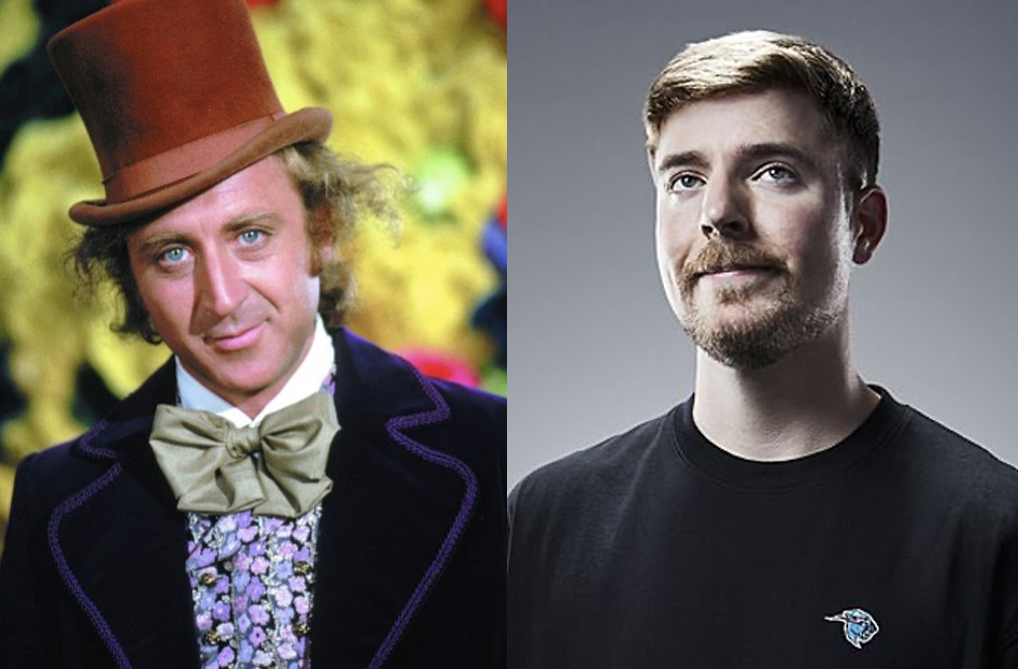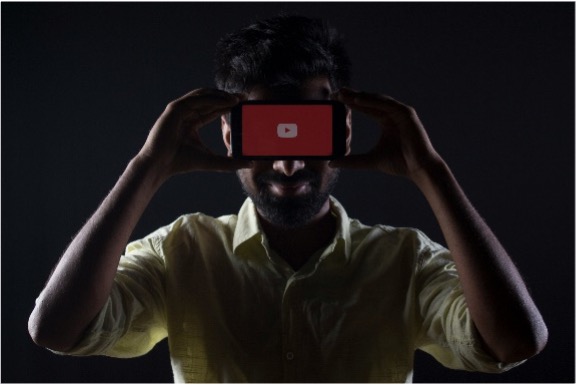



Let’s have a little quiz. Can you name the brand that attracts 1 million new subscribers every 72 hours to its YouTube site? Has over 500 million subscribers. On its main channel, it has generated over 2 billion views in the last 30 days. This brand was recently named as one of the world’s most 100 influential by Time magazine. Its leader just became the first brand to reach 1,000,000 followers on Meta’s new social app, Threads, even doing this before Meta CEO, Mark Zuckerberg. It’s not a technology brand, well not one that you might be thinking of. This brand is also famous for its acts of philanthropy; having funded cataract surgeries for 1000 blind people and building hundreds of homes for families across Jamaica, El Salvador, Argentina, and Colombia.
Can you name the brand? If you’re a Generation X marketer like me, then there’s a good chance that this brand isn’t on the tip of your tongue – but it should be. The brand, of course, is MrBeast; a brand created by its founder Jimmy Donaldson in 2017. Since then, Jimmy has gone on to create a snacking brand known as Feastables, Team Seas which is a fundraiser for cleaning up the ocean that has already raised over $30 million. Jimmy is also ranked on the Forbes list for the highest-paid YouTube creator; he’s worth over $500 million with this value rapidly approaching a billion. Oh, and he’s only 27 years old. Some guys get all the luck, eh?
Like all overnight successes, MrBeast is far from it; he has a system that he implements relentlessly; and it continues to pay dividends. Let’s take a deep dive into this system to understand the steps that Jimmy puts in place – hopefully we can all learn a little bit from MrBeast and who knows what the future might look like?
MrBeast’s 8 rules to brand success
Rule number 1: Know your audience
If your business model is predicated on generating repeat views and attracting new subscribers, you’d better make sure that you know this subscriber/customer well. Know their desires, their fears, and what they would love to see and experience but don’t have the resources to create. MrBeast does this better than anybody else. Once you subscribe to the MrBeast channel you are now part of the club. And like any club, you are made to feel welcome because, it turns out, the other people in the club are just like you, even though there are millions of them.

If we apply this to a more traditional brand, it’s easy to see how all our regular customers have signed up for a club by purchasing our brand. Of course, we can grill people as to the functional reasons that they associate with a certain brand or buy it on repeat but deep down we know it’s likely that there is an emotional connection that people associate with the brand. The brand represents them. And just like the work that MrBeast does we need to understand our customers deeply. It’s not enough just to dip in and dip out when there’s a fork in the road in our strategy or when something goes wrong. We need to keep our customers close always. If we know them better than our competitors, we can cater for them better too. And of course, the risk is if we don’t then a competitor will.
Rule number 2: Steal with pride
We don’t need to constantly reinvent the wheel. MrBeast has made it very clear that since really starting to drive his videos in 2017, what he has done is find other pieces of content that have worked really well and just done them better. As anyone who works in marketing will attest, new product development is one of the hardest areas of our job. Truly distinctive new product development is extremely difficult and rare. Yet, everyday thousands of brands across the world are launching new products, new strategies, and new systems to attract customers. Do what MrBeast does – analyse these strategies and systems, review these products, adopt them for your own means and launch with confidence.

Rule number 3: Go big or go home
You may have seen videos on YouTube where benevolent content creators decide to donate something of value to someone more needy. This type of video has come in for criticism and it’s often called stunt philanthropy. It’s easy to see why critics could have an issue here but that’s another subject altogether. When Jimmy Donaldson saw videos like this, he was very quick to realise their viral potential. And one of his earlier videos that I remember seeing (yes, I have seen a lot of MrBeast videos living in a house full of teenagers) MrBeast purchased a full car dealership along with the offices and the 100 or so cars sitting outside the front door for sale. He put his own staff in place to run the car dealership for one day. Their orders were as follows ‘bargain every customer down’. You read that right – bargaining the customer down so they pay nothing. This led to people coming into the car dealership looking to buy cars for approximately $20,000 and leaving not just with a free car but also with a free tank of petrol free service, and you can bet a whole lot of love for MrBeast. The business case of a stunt such as this means that MrBeast takes the initial risk. What if nobody watches the video that he spent so long pulling together? In contrast, if they do (and they always do at this stage), then for every $20,000 car he gives away he makes multiples of that figure.

In marketing these days, we often talk about the number of contacts our communications need to have with our customers to cut through, leading to a sale. Some suggest that 7 contacts are the ideal number of contacts. This leads to multi-channel marketing plans covering everything from experiential marketing to ambient media to social and traditional advertising. MrBeast is rather fond of taking his biggest channel, YouTube, and driving everything through one door. He goes big, very big indeed. While it’s easier to equate the above example to experiential marketing they’re also other examples such as brands focusing all their budget on one market segment, one launch, and one territory. Be single-minded, then over-serve, over-deliver and over-satisfy that market.
Rule number 4: Fail fast
Straightforward enough this one – basically you know when you know. In a previous role, I had the job of launching lots of FMCG products. Some were based on products that have worked in other territories, others were based on in-depth research and customer understanding. None were launched on a whim. Nevertheless, sometimes it works and sometimes it doesn’t. Senior people in the business need to know when money could be better spent elsewhere. A fundamental question here is – if what we’re trying to achieve is successful, will it be impactful enough to make a difference to our overall strategy? Or in short, is all the effort, resource and money worth it? If it is then it’s time to keep on moving, making sure that strategies are tweaked along the way and the same mistakes are not being made. If it isn’t, it’s time to pack up the lemonade stand and go home.

Rule number 5: Don’t leave the important stuff to chance
YouTube is the ultimate visual medium. When browsing it, the user browses pages upon pages of thumbnail images. Jimmy Donaldson quickly realised that this thumbnail was the doorway to all of his videos. If the thumbnail is not attractive, then people won’t click on it and all the time and effort spent on creating the video would have been a waste. He now spends about $10,000 creating every thumbnail and creates approximately 20 thumbnails for every video. He evaluates each of the thumbnail images with his core audience and lo and behold his thumbnails are the most successful in the business – he doesn’t leave any of this to chance.

I am a firm believer that market research in many organisations today has become far too much of a rigid process. Brands test and evaluate assets and campaigns on an ad hoc basis. And because each of these ad hoc projects requires so much in terms of budgetary sign-off, briefing, team building, fieldwork, debriefing and implementation that many strategies and assets are just never tested at all. Research should not be a big deal and should definitely not be difficult. Brands need to build constant customer feedback on both current activities and potential future activities into their business systems. By doing this they can identify what their brand thumbnail is and go to town on it as MrBeast does. Keep your customers close, know them better.
Rule number 6: Internal and external feedback loops
Jimmy Donaldson is a huge believer in teamwork. He often talks about how hard it is to work as a solo entrepreneur versus working alongside colleagues. He argues that by working efficiently together we can learn from each other, notice our mistakes quicker, fix our mistakes together and build brands quicker. To do this companies need to have transparent and effective internal feedback mechanisms.

These internal feedback mechanisms need to be supplemented by ongoing external feedback mechanisms – or simply listening to our customers. If something goes wrong despite all the work that we’ve put into it internally we need to know why. Just ask your customers. You’ll likely find that they are a very engaged lot, who are on your side and willing to help. No brand is an island.
Rule number 7: Kaizen
Irish author, Samuel Beckett once said “Ever tried? Ever failed? No matter. Try again. Fail again. Fail better”. He had a way with words did Mr Beckett. This rule is very clearly linked to rule 6 in terms of feedback. Another factor that contributes to his success is that he creates a feedback loop for every activity he undertakes. He will then generate a handful of lessons, maybe only three, and he will note these down. These lessons will then be applied to the next video or project. It’s simple really. It’s the equivalent of a post-launch review, a post-project feedback session or a post-event learning immersion session. The difference is, perhaps that Jimmy Donaldson ensures that once these few nuggets of learning are applied with rigor to the next project. We’ve all heard of death by 1000 cuts – this is the opposite. James Clear in his book, Atomic Habits (well worth the read if you haven’t already) talks about the ‘Law of marginal gains’ – this is what MrBeast puts into practice within every single project.

Rule 8: Reinvest
This rule of reinvestment is closely aligned to rule 7. Basically, Jimmy Donaldson suggests that every success of his brand, having generated a ton of cash, has come about due to him reinvesting in his next project. This leads to an ever-improving product, bigger, better and often wackier promotions. And from the MrBeast brand’s point of view, the most important metric, more eyeballs on the videos. It would be very easy for Jimmy Donaldson to cash out now. This is a man who was kicked out of his home because he dropped out of college to chase his dream of making videos on the internet. Now, he will never go without money again. So why doesn’t he cash out and sell his brand? He has created a movement, a club and he feels it is his responsibility to keep that movement moving. Of course, none of us are naive enough to think that the money doesn’t help! There is a lot of it. He claims reinvesting is something he has done from day one where he reinvested every dollar in order to be able to afford a computer to edit his videos. By reinvesting every single time, he continues to build his empire.

Recap on MrBeast – 8 rules for brand success
Rule 1: Know your audience (better than your competitor does)
Rule 2: Steal with pride
Rule 3: Go big or go home
Rule 4: Fail fast
Rule 5: Don’t leave the important stuff to chance
Rule 6: Internal and external feedback loops
Rule 7: Kaizen
Rule 8: Reinvest
I hope you found this article interesting, and useful and the next time a 13-year-old asks you your thoughts on MrBeast you will be able to talk with confidence on who he is and why he is important. If bringing your customer base closer is important to you (and it should be!), then book a demo to learn more about the simple-to-use, customisable LifeStars research app and see it working.
As for Mr. Jimmy Donaldson, it will be interesting to see how the future plays out for him. Could he be a future President of the USA? Laughable? Tell that to the people who voted former actor, Ronald Reagan, into the White House. It’s very plausible, in my opinion. Perhaps he will decide enough is enough and just kick back and relax – unlikely.
When it all boils down to it what is the essence of MrBeast. As a Gen X, I’m not so sure I am qualified to say. However, I asked my Gen Z son and he very quickly spurted out “He does the stuff that we all dream of so we can see how it would work.”It turns out Jimmy Donaldson is indeed this generation’s Willie Wonka, the music maker and the dreamer of dreams. And from that, we can all learn something.
Credit: Azhar Ahmed (https://www.threads.net/@iamazharahmed) wrote a thread on Mr Beast on Threads – I have used it as well as Wikipedia, CNN, Kiddle and X when authoring this article.
Please note: We acknowledge that, at the time of writing, MrBeast is facing allegations concerning workplace practices and the conduct of certain employees. These allegations remain unsubstantiated at present, and only time will provide further clarity.